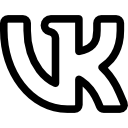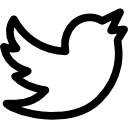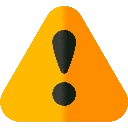acticed in a primary nursing-delivery system and are very resistant to this idea. What would be the best initial strategy for implementation of this change? a. Exploring the values and feelings of the RN group in relationship to this change b. Leaving the RNs alone for a time so they can think about the change before it is implemented c. Dropping the idea and trying for the change in a year or so when some of the present RNs have retired d. Hiring the assistants and allowing the RNs to see what good additions they are ANS: A Influencing others requires emotional intelligence in domains such as empathy, handling relationships, deepening self-awareness in self and others, motivating others, and managing emotions. Motivating others recognizes that values are powerful forces that influence acceptance of change. Leaving the RNs alone for a period of time before implementation does not provide opportunity to explore different perspectives and values. Avoiding discussion until the team changes may not promote adoption of the change until there is opportunity to explore perspectives and values related to the change. Hiring of the assistants demonstrates lack of empathy for the perspectives of the RN staff. TOP: AONE competency: Knowledge of the Health Care Environment Leading and Managing in Nursing 7th Edition Yoder-Wise Test Bank lOMoARcPSD| 6. As the RN charge nurse on the night shift in a small long-term care facility, you’ve found that there is little turnover among your LPN and nursing assistant (NA) staff members, but they are not very motivated to go beyond their job descriptions in their work. Which of the following strategies might motivate the staff and lead to greater job satisfaction? a. Ask the director of nursing to offer higher wages and bonuses for extra work for the night LPNs and NAs. b. Allow the LPNs and NAs greater decision-making power within the scope of their positions in the institution. c. Hire additional staff so that there are more staff available for enhanced care, and individual workloads are lessened. d. Ask the director of nursing to increase job security for night staff by having them sign contracts that guarantee work. ANS: B Hygiene factors such as salary, working conditions, and security are consistent with Herzberg’s two-factor theory of motivation; meeting these needs avoids job dissatisfaction. Motivator factors such as recognition and satisfaction with work promote a satisfying and enriched work environment. Transformational leaders use motivator factors liberally to inspire work performance and increase job satisfaction. TOP: AONE competency: Communication and Relationship-Building 7. The nurse manager wants to increase motivation by providing motivating factors for the nurse on the unit. What action would be appropriate to motivate the staff? a. Collaborate with the human resource/personnel department to develop on-site daycare services. b. Provide a hierarchical organizational structure. c. Implement a model of shared governance. d. Promote the development of a flexible benefits package. ANS: C Complexity theory suggests that systems interact and adapt and that decision making occurs throughout systems, as opposed to being held in a hierarchy. In complexity theory, every voice counts, and therefore all levels of staff would be involved in decision making. This principle is the foundation of shared governance. TOP: AONE competency: Communication and Relationship-Building 8. A charge nurse on a busy 40-bed medical/surgical unit is approached by a family member who begins to complain loudly about the quality of care his mother is receiving. His behavior is so disruptive that it is overheard by staff, physicians, and other visitors. The family member leaves the unit abruptly, and the nurse is left feeling frustrated. Which behavior by the charge nurse best illustrates refined leadership skills in an emotionally intelligent practitioner? a. Reflect to gain insight into how the situation could be handled differently in the future. b. Try to catch up with the angry family member to resolve the concern. c. Discuss the concern with the patient after the family member has left. d. Notify nursing administration of the situation. ANS: A lOMoARcPSD| Goleman suggests that emotional intelligence involves insight and being able to step outside of the situation to envision the context of what is happening as well as being able to manage emotions such as frustration effectively. TOP: AONE competency: Leadership 9. The chief nursing officer has asked the staff development coordinator to facilitate the development of a clinical competency program for the facility. While making rounds on the units, the staff development coordinator overhears RN staff complaining that they feel it is insulting to be required to participate in a competency program. What behavior by the staff development coordinator is most appropriate in this situation? a. Disregard staff concerns and continue with development of the program. b. Inform the nurses that this program is a requirement for JCAHO accreditation. c. Schedule a meeting with the chief nurse executive to apprise her of the situation. d. Facilitate a meeting so nurses can articulate their values and concerns about a competency program. ANS: D The manager role involves guiding others through a set of derived practices that are evidence-based and known to satisfy preestablished outcomes such as participation in a competency program. This involves engagement of staff through sharing of concerns and ideas. A close analysis of the IOM report and the summary of the PPACA suggests that no health reform can unfold without active nursing engagement. Each document emphasizes that nurses must lead, manage, and behave as active collaborators with other members of the health team and with those being served. TOP: 10. The nurse manager has been asked to implement an evidence-based approach to teach ostomy patients self-management skills postoperatively. The program is to be implemented across the entire facility. What illustrates effective leadership in this situation? a. The training modules are left in the staff room for times when staff are available. b. The current approach is continued because it is also evidence-based and is more familiar to staff. c. You decide to implement the approach at a later date because of feedback from the RNs that the new approach takes too much time. d. An RN who is already familiar with the new approach of volunteers to take the lead in mentoring and teaching others how to implement it. ANS: D Followership occurs when there is acquiescence to a peer who is leading in a setting where a team has gathered to ensure the best clinical decision making, and actions are taken to achieve clinical or organizational outcomes. Followership promotes good clinical decisions and use of clinical resources. TOP: AONE competency: Communication and Relationship-Building 11. You overhear a new graduate RN telling a nurse colleague that leadership and management belong to the unit manager, not to her. As a nursing colleague, what do you know to be true in regard to the statement? a. The statement is correct. Leadership is not the role of the staff nurse. lOMoARcPSD| b. The new graduate would benefit from further understanding of her role as a professional, whose influence may affect the decision making of patients, colleagues, and other professionals. c. The new graduate has been influenced by nurse leaders and managers who leave for other positions. d. The general perception is that nurse leaders and managers are not satisfied in their jobs. ANS: B Care coordination that involves the intersection of individual, family, and community-based needs requires that nurses have self-confidence, knowledge of organizations and health systems, and an inner desire to lead and manage. There is often a view that leadership is isolated to those holding managerial positions, and that a direct care nurse is subject to following by adhering to the direction of others. Such views fail to acknowledge that to be a nurse requires each licensed individual to lead, manage, and follow when practicing at the point-of-care and beyond. TOP: AONE competency: Leadership 12. The charge nurse walks into Mr. Smith’s room and finds him yelling at the LPN. He is obviously very upset. The charge nurse determines that he has not slept for three nights because of unrelieved pain levels. The LPN is very upset and calls Mr. Smith an “ugly, old man.” The charge nurse acknowledges the LPN’s feelings and concerns and then suggests that Mr. Smith’s behavior was aggressive but was related to lack of sleep and to pain. The charge nurse asks, “Can you, together with Mr. Smith, determine triggers for the pain and effective a. Lack of empathy and understanding for Miss Jones b. c. Leadership behavior d. Management behavior ANS: C The situation between Mr. Smith and Miss Jones is a complex situation involving unrelieved patient symptoms and aggressiveness toward a staff member. Providing engaged, collaborative guidance and decision making in a complex situation where there is no standardized solution reflects leadership. TOP: AONE competency: Leadership 13. After assessing an older adult patient in long-term care who has been slowly deteriorating for weeks, the nurse manager calls the family and asks them to come in, as the patient is dying. What is the most likely basis for the nurse manager’s request? a. An established clinical pathway b. Confirmatory scientific evidence c. Unit protocol d. Experience ANS: D The nurse manager is employing knowledge and experience in determining that the patient is dying, because the course of dying is not standardized and cannot be determined by clinical pathways. Leading and Managing in Nursing 7th Edition Yoder-Wise Test Bank lOMoARcPSD| TOP: AONE competency: Knowledge of the Health Care Environment 14. Chart audits have revealed significant omissions of data that could have legal and financial guideline ramifications. The unit manager meets with the staff to discuss audit findings and to find approaches that will address the gaps in charting and achieve desired goals. What is the manager demonstrating? a. Leadership b. Management c. Decision making d. Vision ANS: B The process of guiding others to meet established goals, outcomes, and procedures is management. This can require collaborative decision making to determine how best to reach predetermined goals and follow established practices. TOP: AONE competency: Knowledge of the Health Care Environment 15. A family is keeping vigil at a critically ill patient’s bedside. Distant family members call the unit continuously asking for updates and expressing concern. The nurse speaks with the distant family members and states she is referring them to the hospital social worker, whose role is to work with family in this situation. What role is the nurse assuming through this action? a. Manager b. Leader c. Follower d. Laissez-faire ANS: A As a manager, you are concerned with managing and coordinating resources to achieve outcomes in accordance with established clinical processes. Referral to a social worker alleviates demand on staff time and is consistent with hospital procedures. TOP: AONE competency: Communication and Relationship-Building 16. A family is keeping vigil at a critically ill patient’s bedside. The nurse approaches the unit manager with concern over the family dynamics for the patient concerned there are patient-family conflicts based on patient’s wishes. The nurse suggests that the patient’s provider may need to discuss the treatment plan with the family. The unit manager states he will arrange a discussion with the patient’s provider and ask the nurse to support the provider’s decisions. What is the role of the nurse in this situation? a. Leadership b. Management c. Follower d. Evidence-based ANS: C In the followership role, you bring to the manager your concerns about concerns for patients and the outcomes and accept the direction given by the manager in response to your concerns. Leading and Managing in Nursing 7th Edition Yoder-Wise Test Bank lOMoARcPSD| NU RS IN GT B.CO M TOP: AONE competency: Knowledge of the Health Care Environment 17. The manager calls the staff together to assess a situation in which the family of a seriously ill patient is anxious and is absorbing a great deal of staff time in consultation, discussion, and questioning of treatment decisions. Staff members are becoming distanced from the family. After inviting the concerns of staff, the manager explains that the organization values patient-centered care and that evidence supports that acting as an advocate and a listener is helpful to families. The manager asks the staff for ideas and strategies that are effectively patient-centered in dealing with families in similar situations. What is the role of the nurse manager in this situation? a. Leadership b. Management c. Follower d. Visionary ANS: A As a leader, the manager is providing and communicating vision and direction based on evidence and experience. The manager is engaging others in decision making that moves them toward the vision with a reasonable level of risk taking. TOP: AONE competency: Leadership 18. The manager of a unit is finding it difficult to work with a new graduate nurse. The new nurse has many ideas; however, his manner of presenting them irritates the manager. After reflection and discussion with others, the manager recognizes that she feels threatened by his behavior. She comes to understand that the new nurse is trying to establish his own role on the unit; is not trying to challenge her; and needs guidance, coaching, and affirmation. What is the nurse manager demonstrating in this situation? a. A positive self-concept b. Deepening self-awareness c. Leadership d. Acquiescence ANS: B Stepping outside oneself to envision the situation while assuming ownership is a component of emotional intelligence. This is an example of self-awareness to identify the resolve to self-conflict in this situation. TOP: AONE competency: Professionalism 19. As the head of a nursing program, you consistently invite the ideas of your team about innovations in teaching, community partnerships, and curriculum design and invite participation in decisions. Many of these ideas have been implemented successfully, and your staff members are keen to try on other ideas. What is the leadership you are employing? a. Situational b. Trait-based c. Contingency-based d. Transformational ANS: D Leading and Managing in Nursing 7th Edition Yoder-Wise Test Bank lOMoARcPSD| NU RS IN GT B.CO M Transformational leadership involves attending to the needs and motives of followers, which results in creativity, improvement, and employee development. TOP: AONE competency: Professionalism 20. As a leader on a rehab unit, the manager encourages all staff members to see themselves as having a role in decision making and quality care. The manager sees their role as involving particular responsibilities in decision making but not as a hierarchal role. What is this view of the role consistent with in this situation? a. Trait theories b. Complexity theory c. Situated theory d. Emotional intelligence ANS: B Complexity theory involves envisioning each member of the team involved in decision making, management, and leadership, with the leader not seen in a hierarchal relationship to other team members. TOP: AONE competency: Leadership 21. A staff nurse has been recently promoted to unit manager. During the time on the unit, the nurse formed a strong social network among staff, has promoted the development of relationships between staff and workers in other areas of the organization, and has formed relationships that generate ideas from patient organizations and the local nursing education program. According to complexity theory, what principle is being engaged? a. Empowerment b. Systematic thinking c. Development of networks d. Bottom-up interactions ANS: C According to complexity theory, social networks evolve around areas of common interest and are able to respond to problems in creative and novel ways. TOP: AONE competency: Knowledge of the Health Care Environment 22. According to the complexity theory, what would be the focus of measurement? a. Cost per hospital day b. Bed utilization c. Infection rates d. Staff morale and budgets ANS: D According to complexity theory and the principle “Think systematically,” one cannot ignore objective data or nonmeasurable data, as both inform decisions. TOP: AONE competency: Business Skills 23. During a staff meeting held to discuss developing a mission statement for the unit, the idea of placing patient needs first is discussed. What is considered when the suggestion by the manager is for the unit mission to be derived from the organization mission? Leading and Managing in Nursing 7th Edition Yoder-Wise Test Bank lOMoARcPSD| NU RS IN GT B.CO M a. Empowering b. A leadership tag c. A symbol d. A management task ANS: B According to complexity theory, leadership tags, which are similar to values, reflect the patient-centered philosophies and values-driven characteristics that define an organization and give it personality. TOP: AONE competency: Knowledge of the Health Care Environment 24. A dispute arises between an RN and an LPN over a patient issue. The tension continues between the two and begins to affect other staff members, who are drawn into the conflict. Over time, the team becomes polarized toward either the RN or the LPN. How might this situation be prevented? a. Expediency in responding to the initial dispute, once it became apparent that it could not be resolved by the two parties themselves b. Asking other staff members what the real issues were in the dispute between the RN and the LPN c. Reassigning one of the parties to another unit when it became apparent that the two individuals could not resolve the dispute themselves d. Calling a staff meeting at the onset of the dispute to allow the team and the RN and LPN to discuss the initial dispute ANS: A The initial step in conflict resolution should have involved an expedient response to the issues and putting a focus on the issues involved in the dispute between the LPN and RN through negotiation involving the two parties, before the dispute involved others. TOP: AONE competency: Communication and Relationship-Building 25. The unit is shifting from primary nursing to a team model in an effort to contain costs. Staff members are upset about the change and ask for a meeting to discuss the new model. After hearing their concerns related to reduction in professional autonomy, what is the initial response by the manager to address the concerns? a. Acknowledge the loss. b. Explain the reasons for change, emphasizing the need to reduce costs. c. Repeat the information several times, giving detailed budget overviews. d. Adjourn the meeting and provide explanation through e-mail. ANS: A Visioning involves engaging with others to assess the current reality, specify the end point, and then strategize to reduce differences. This requires trusting relationships that acknowledge the differences in values and ideas. When done well, the nurse manager and the nurses within a unit experience creative tension that inspires working in concert to achieve desired goals. TOP: AONE competency: Communication and Relationship-Building MULTIPLE RESPONSE Leading and Managing in Nursing 7th Edition Yoder-Wise Test Bank lOMoARcPSD| NU RS IN GT B.CO M 1. A new graduate nurse wonders about the directions that her preceptor has given her regarding management of incontinent, confused patients. The new nurse brings the preceptor evidence-based information she located regarding incontinence interventions for confused patients and asks to talk about the guidance that given after the preceptor reviews the information in the article. What is the new nurse demonstrating in this situation? (Select all that apply.) a. Assertiveness b. Followership c. Management d. Insubordination ANS: A, B This is an example of followership in which a staff nurse is demonstrating assertive behavior and presenting evidence that may influence the decision making of her nurse leader and manager. TOP: AONE competency: Knowledge of the Health Care Environment Leading and Managing in Nursing 7th Edition Yoder-Wise Test Bank lOMoARcPSD| NU RS IN GT B.CO M Chapter 02: Clinical Safety: The Core of Leading, Managing, and Following Yoder-Wise: Leading and Managing in Nursing, 7th Edition MULTIPLE CHOICE 1. In an effort to control costs and maximize revenues, the Rehabilitation Unit at Cross Hospital reduced the number of its managers and increased the number of units for which each manager was responsible. Within a year, the number of adverse events on the units had doubled. How do the increase in adverse events relate to decreased managers? a. The overload of staff nurse duties b. Resistance to change by staff c. A change in reporting system for everyone d. Fewer clinical leaders facilitate best practice ANS: D Eliminating barriers to the implementation of best practices is the role of managers and leaders. When there are insufficient resources for leadership to encourage a culture in which evidence-based practice is embraced, frontline nurses recognize this as a stumbling block for delivering quality care. TOP: AONE competency: Knowledge of the Health Care Environment 2. The Rehabilitation Unit at Pleasant Valley Hospital has a high number of falls. What interventions might assist to reduce the number of falls on the unit? a. Determining who is responsible for the falls b. Strengthening unit policies to avoid inappropriate admissions c. Encouraging involvement of nurses in education related to falls and safety d. Ensuring that patients are appropriately restrained if they are at risk for falls ANS: C The IOM (2010) emphasizes the need for nurses to engage in lifelong learning and to use evidence and best practices to inform practice and ensure safety. TOP: AONE competency: Professionalism 3. How would the nurse executive begin to increase safety in patient care areas of the Valley Hospital? a. Asking the community what the safety issues are b. Consulting with a management expert about staffing schedules c. Ensuring that the senior nursing officer attends the board meetings d. Instituting improved practices to reduce needlestick injuries ANS: C The IOM report (2004) highlighted the importance of the attendance of the senior nurse executive at board meetings to be a key spokesperson on safety and quality issues. TOP: AONE competency: Knowledge of the Health Care Environment Leading and Managing in Nursing 7th Edition Yoder-Wise Test Bank lOMoARcPSD| NU RS IN GT B.CO M 4. During review of back injuries, it is determined that a large number of injuries are occurring in spite of mechanical lifts being used. Furthermore, it is determined that some lifts are outdated. In addressing this concern, the unit manager: a. meets individually with nurses who are observed to be using the lifts incorrectly to review the correct procedure. b. after consultation with the staff about the review, orders new lifts to replace older ones that are malfunctioning. c. blames the system for inadequate funding for resources. d. reviews the system of reporting incidents to ensure that appropriate reporting is occurring. ANS: A The involvement of staff nurses in safety on the unit is imperative in improvement of quality and the provision of patient care. This is a relationship engagement by the manager to engage the nurses and building these relationships improves quality. TOP: AONE competency: Communication and Relationship-Building 5. What did the IOM Health Professions Education report highlight as a concern for patient safety? a. A normal risk in professional practice b. A result of disciplinary silos c. A reflection of frontline staff d. Related to systems errors ANS: B The IOM Health Professions Education report (2004) highlighted the education of health disciplines in silos as a major concern in patient safety and endorsed five recommendations. One to be increased and improved communication between the health disciplines. TOP: AONE competency: Knowledge of the Health Care Environment 6. A nurse manager is implementing strategies to support the steps in the AHRQ document “Five Steps to Safer Health Care.” What does the manager include in the implementation? a. Patients are actively encouraged to make decisions related to care. b. Rules and decisions are made through centralized processes. c. You monitor the performance of each staff member closely. d. Preference is given to increasing staff numbers rather than staff credentials. ANS: A The Agency for Healthcare Research and Quality (AHRQ) outlines “Five Steps to Safer Health Care,” which suggests that safe, patient-centered care is facilitated by assisting patients to become active partners in their own care. TOP: AONE competency: Knowledge of the Health Care Environment 7. After consulting with practice environments about quality and safety concerns in health care, a dean in a health care program implements what to improve quality and safety in health care? a. A nursing program that emphasizes the development of a strong disciplinary identity. b. Programming that stresses discipline-based research. Leading and Managing in Nursing 7th Edition Yoder-Wise Test Bank lOMoARcPSD| NU RS IN GT B.CO M c. Partnerships with health care to develop software for the reporting of adverse events. d. An interdisciplinary program for nurses, pharmacists, and medical practitioners that emphasizes collaborative learning teams. ANS: D Health Professions Education identified that education related to health disciplines in silos leads to compromised communication and inability to function as an integrated whole for patient-centered care. TOP: AONE competency: Knowledge of the Health Care Environment 8. What would be the primary emphasis in designing and implementing a quality, safe healthcare environment? a. Evidence-based practice b. Informatics c. Staffing d. The patient ANS: D Focusing on the patient moves care from concern about who controls care to a focus on what care is provided to and with patients, which was an aim identified in the IOM report Crossing the Quality Chasm. TOP: AONE competency: Knowledge of the Health Care Environment 9. The nurse is educating older adult patients on staying safe in the healthcare system. What information does the nurse include in the teaching? a. The need to understand and record all medications being taken. b. Bringing their own linens and other personal items to the hospital. c. Washing hands frequently while in a healthcare environment and using a hand sanitizer. d. Following closely the directions and orders of healthcare providers. ANS: A The Five Steps to Safer Health Care for patients include keeping a list of medications that patients are taking. TOP: AONE competency: Knowledge of the Health Care Environment 10. As a nurse manager on the West Surgery Unit, you are interested in increasing patient safety and reducing morbidity and mortality on your unit. What recommendations would be consistent with the IOM The Future of Nursing report? a. Careful screening of nursing staff for substance use and abuse b. Increased RN staffing on the unit c. Salary and benefits that reflect nursing accountabilities d. Increase in the percentage of baccalaureate-prepared nurses to 80% ANS: D The Future of Nursing advocates for having 80% of the nursing population at a baccalaureate-prepared level. This recommendation reflects research that suggests that improved mortality and morbidity rates occur with a better educated work force. Leading and Managing in Nursing 7th Edition Yoder-Wise Test Bank lOMoARcPSD| NU RS IN GT B.CO M TOP: AONE competency: Knowledge of the Health Care Environment 11. On the West Surgery unit, you want to institute a new system for checking armbands that evidence suggests may increase safety in medication administration. The system involves technology. What strategy may assist with rapid adoption of the technology and system? a. Employ a centralized decision-making approach. b. Use simulators for initial practice to build confidence. c. Bring in a nurse consultant who is familiar with the technology. d. Use early adopters among the staff as leaders and role models in implementation. ANS: D The Institute for Healthcare Improvement (IHI) is dedicated to rapid improvement in patient care through a variety of mechanisms such as rapid cycle change. Rapid cycle change diffuses innovation and changes quickly through early adopters who share information and energy over time and act as role models for others. TOP: AONE competency: Knowledge of the Health Care Environment 12. To achieve Nurse-Sensitive Care Standards developed by the NQF, you advocate for which of the following in your health facility? a. Evidence-based practice to reduce the prevalence of pressure sores b. Implementation of informatics at the bedside c. Staff-manager conferences to review reporting of adverse medical events d. Patient councils to review food, recreation, and nurse-patient relations ANS: A The National Quality Forum (NQF) outlines nursing-centered intervention measures related to prevalence of pressure sores, ventilator-associated pneumonias, volunteer turnover, nursing care hours per day, and skill mix of staff. TOP: AONE competency: Knowledge of the Health Care Environment 13. You notice that Sally, a student on your unit, is giving information to an anxious young teen who seems very uncertain about preparation for an upper GI series. After Sally leaves the room, you ask her how she thought her conversation with the patient. What is the appropriate response for you to give Sally? a. Encourage her to ask the patient if he has questions or concerns about the procedure. b. Advise her to consider providing the patient with more information. c. Suggest that she leave some brochures on the procedure with the patient. d. Suggest that she also provide teaching to the adolescent’s parents. ANS: A The Five Steps to Safer Health Care for Patients includes the step of asking questions if there are doubts or concerns. The nurse can encourage patients to take a larger role in care by taking these steps and by providing patients with coaching in the steps. TOP: AONE competency: Communication and Relationship-Building Leading and Managing in Nursing 7th Edition Yoder-Wise Test Bank lOMoARcPSD| NU RS IN GT B.CO M 14. The NQF provides a model for advancement of healthcare quality that could be used in healthcare organizations. What does the use of this model by the Centers for Medicare and Medicaid Services specificity link with adverse patient events for healthcare facilities? a. Staffing b. Funding c. Composition of executive councils d. Composition of consumer-based councils ANS: B The Centers for Medicare and Medicaid Services (CMS) have adopted a policy based on the NQF’s “Never Events.” The CMS will no longer pay for patient conditions or events that result from poor practice while patients are under the care of a health professional. TOP: AONE competency: Knowledge of the Health Care Environment 15. Pleasant Valley Hospital has amended its safety practices and policies. What has the hospital elected to emphasize accordance with changes by The Joint Commission (TJC)? a. Safety goals specific to Pleasant Valley b. Decision-making processes c. Sufficient staffing for safe care d. Increased numbers of baccalaureate-prepared RNs ANS: A When TJC, a not-for-profit organization that accredits healthcare organizations, changed its focus from processes to outcomes, it emphasized patient safety and issues setting-specific annual patient safety goals. TOP: AONE competency: Knowledge of the Health Care Environment 16. What would managers and staff review annually in order to ensure compliance with The Joint Commission (TJC) to improve patient safety? a. Appropriateness of charting terms and abbreviations b. Nursing hours per patient c. Acuity of patient admissions d. Wait times for care ANS: A The Joint Commission issues setting-specific patient goals annually, as well as a list of “do-not-use” terms, abbreviations, and symbols and sentinel events. TOP: AONE competency: Knowledge of the Health Care Environment 17. How would a nurse manager and the staff prepare for redesignation as a Magnet ® Hospital? a. Commit staff resources over a 6-month period to updating procedure manuals. b. Educate staff through meetings and training sessions regarding appropriate answers to questions. c. Prepare a manual that outlines orientation procedures and ensure that all safety issues are addressed. d. Ensure that there are empirical data to support review of patient outcomes, actions taken, and results of actions. ANS: D Leading and Managing in Nursing 7th Edition Yoder-Wise Test Bank lOMoARcPSD| NU RS IN GT B.CO M Through the Magnet® model, organizations must demonstrate how they provide excellence in five areas. Between designation and redesignation as a Magnet® organization, greater emphasis is placed on empirical quality results. TOP: AONE competency: Knowledge of the Health Care Environment 18. Sarah is a second-year nursing student. The clinical instructor overhears Sarah telling a patient that she “always” checks patients’ bracelets before giving medication and she is not sure how the nurses on the unit “get away with” not making more errors than they do. The clinical instructor pulls Sarah aside and explores with her how her communication might affect the patient and what it reflects about her beliefs related to the team. What competency does this action outline? a. QSEN b. IHI c. DNV/NIAHO d. AHRQ ANS: A The Quality and Safety Education for Nurses (QSEN) project provides resources related to competencies that prelicensure and graduate students need to develop to serve as safe practitioners. These competencies include leading and managing, teamwork and collaboration. TOP: AONE competency: Knowledge of the Health Care Environment 19. What does the SBAR approach to patient safety encourage? a. Consistency in assessment and practices b. Continuing education c. Multidisciplinary approaches d. Patient feedback ANS: A The use of SBAR (Situation, Background, Assessment, and Recommendation) checklists are designed to decrease omission of important information and practices. TOP: AONE competency: Knowledge of the Health Care Environment 20. As a manager in a new nursing home, where might you consult for guidance and evidence to support the development of safe patient practices? a. Hospitals b. Business c. Industry d. Outpatient clinics ANS: A Practices that were once mostly studied in hospital settings are now scrutinized for implementation in other settings, such as outpatient clinics, rural settings, and nursing homes. TOP: AONE competency: Knowledge of the Health Care Environment 21. What facilitate the development of decision-making skills related to safe patient care for a nurse manager? a. Regular reflection on decisions
No review has been posted for this item yet
 Cookies!
Cookies!









